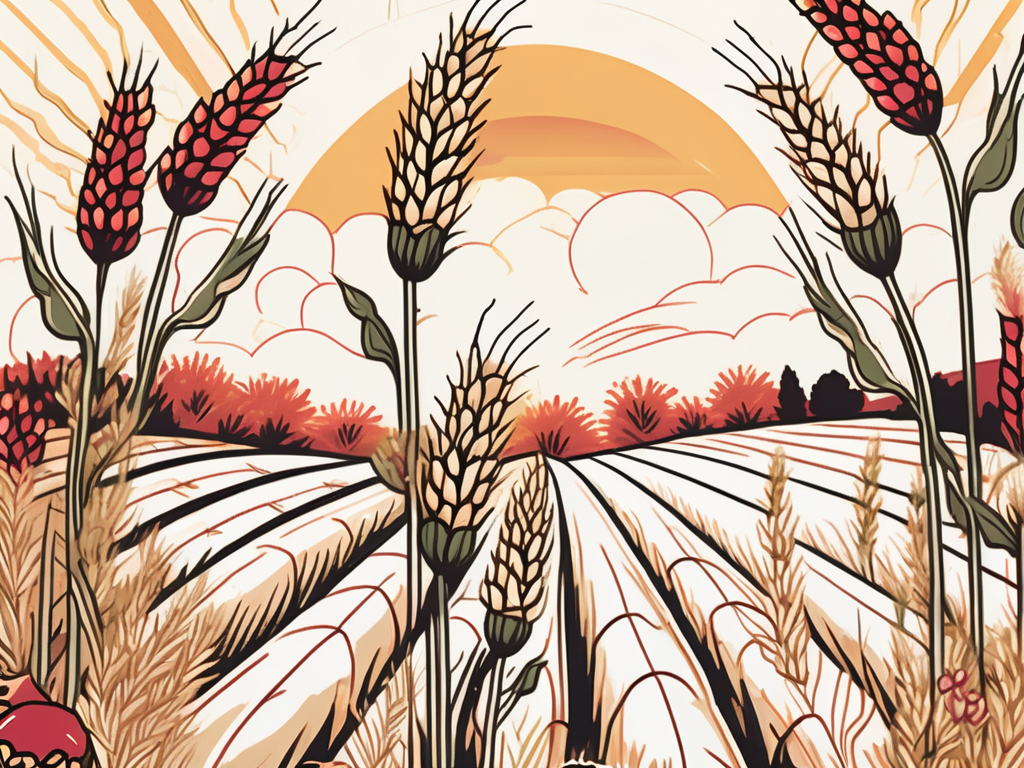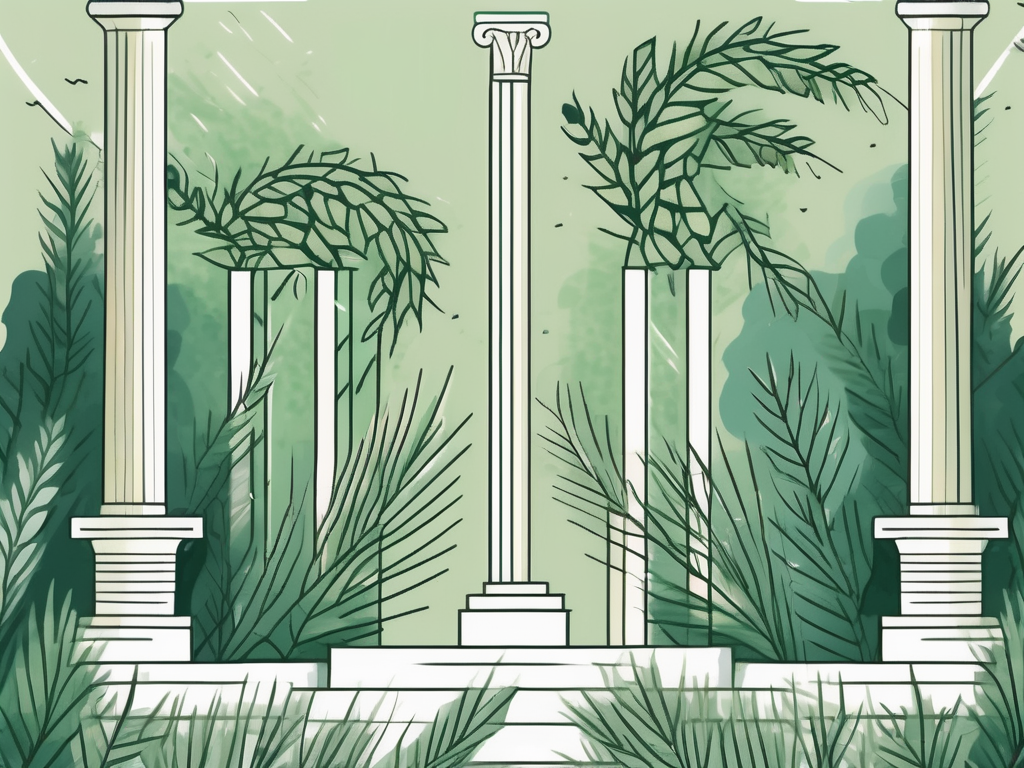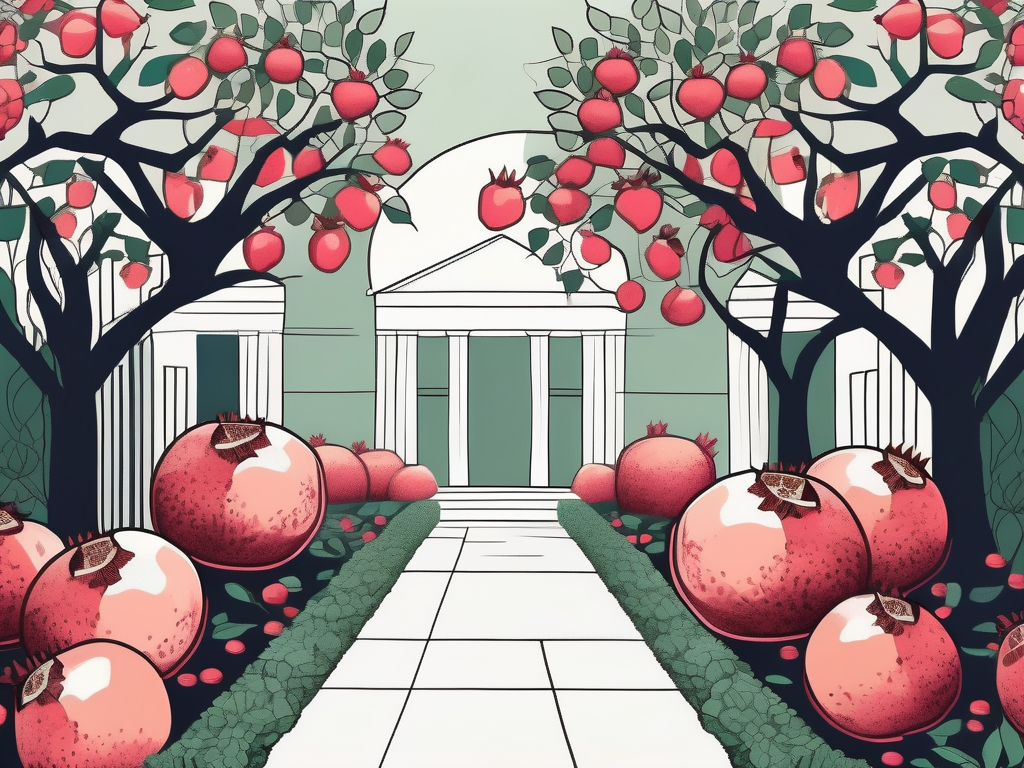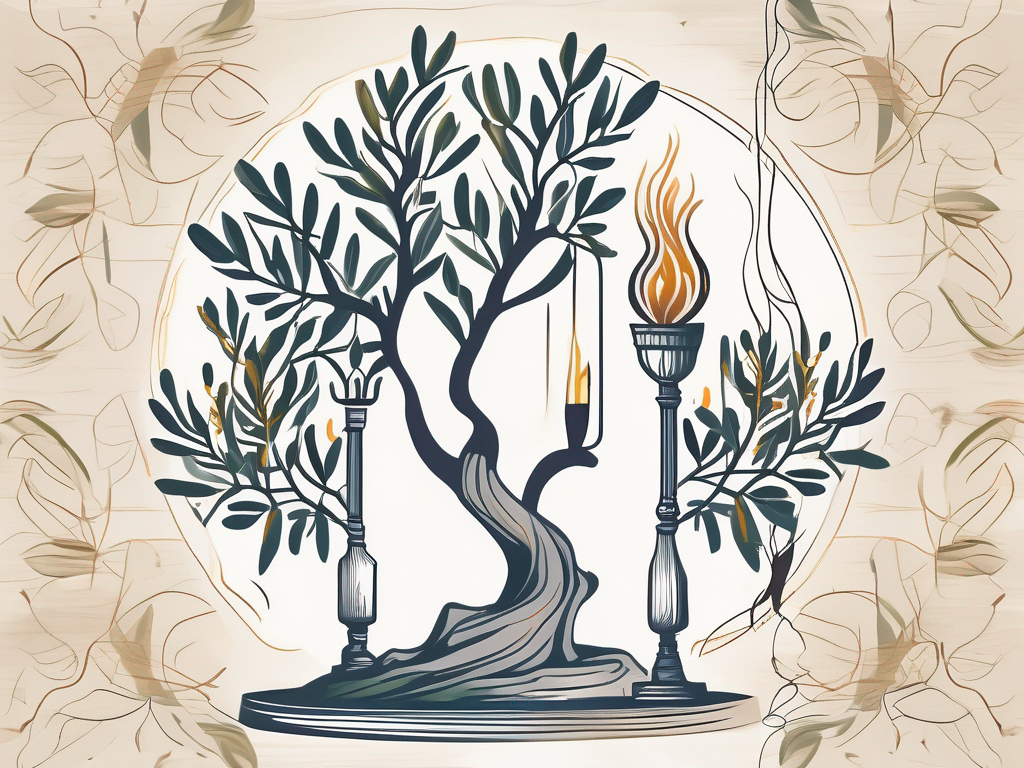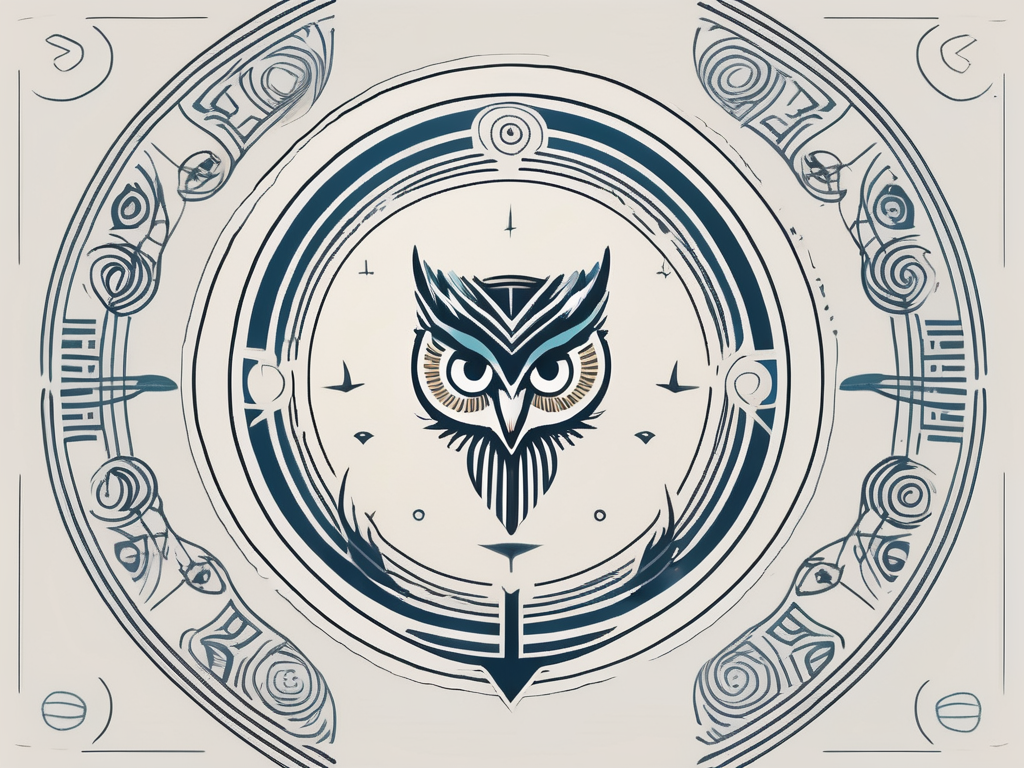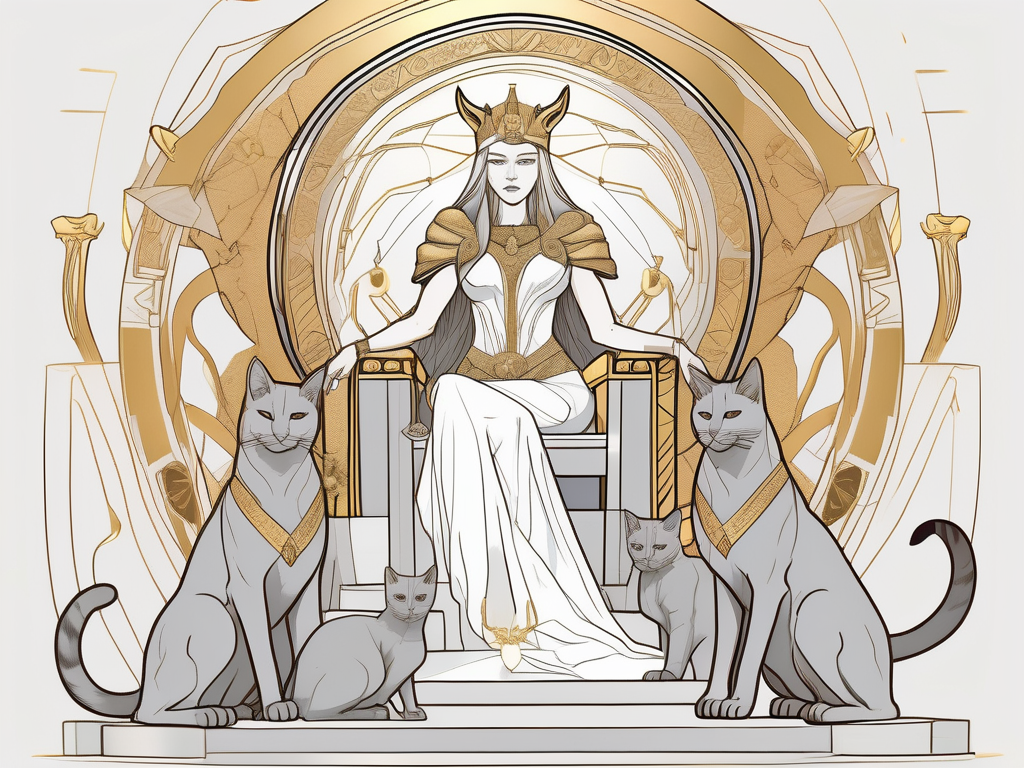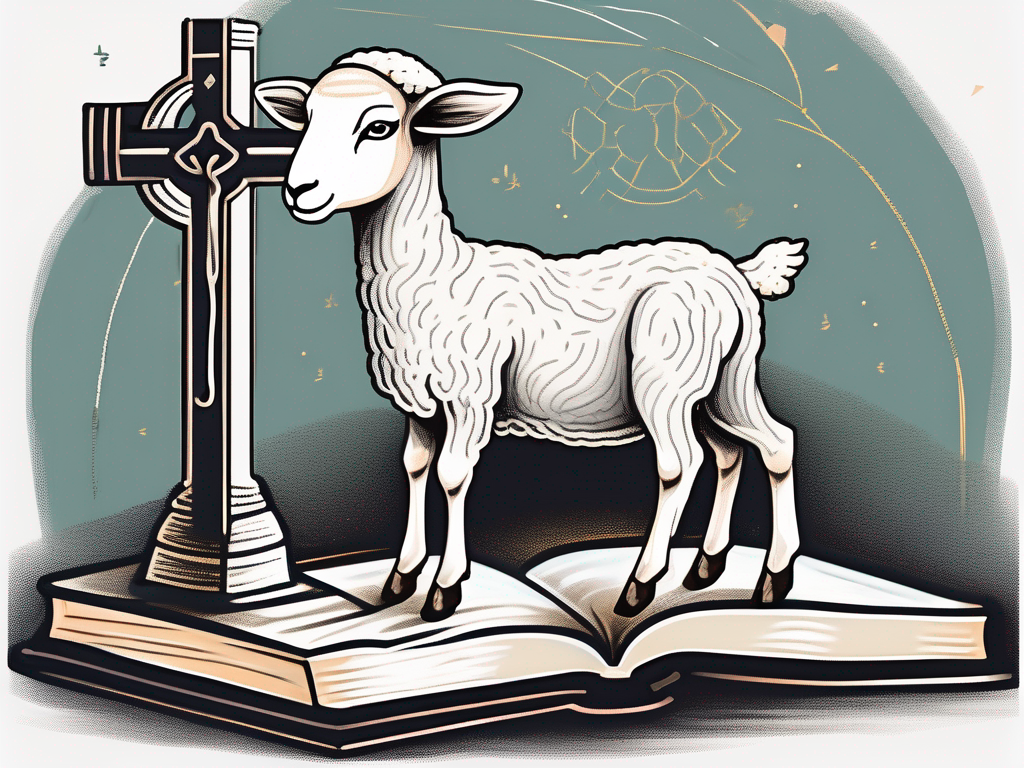Welcome to the fascinating world of Greek mythology, where divine beings rule over the realms of nature, love, and the cosmos. In this article, we delve into the captivating story of Demeter, the goddess of harvest and fertility. Known for her power to bring bountiful crops and bestow the gift of fertility upon both humans and the earth, Demeter holds a special place in the pantheon of ancient Greek gods.
Understanding the Role of Demeter in Greek Mythology
Among the myriad of deities in Greek mythology, Demeter stands out as a vital figure closely associated with the concepts of harvest and fertility. In the ancient Greek world, the success of the harvest and the ability to procreate were matters of great importance. Understanding the significance of these aspects provides us with insights into Demeter’s role in Greek mythology as a whole.
The Importance of Harvest and Fertility in Ancient Greece
Agriculture played a pivotal role in the survival and prosperity of ancient Greek civilization. The Greeks understood the need for bountiful crops to sustain their cities, feed their people, and fuel their economy. Demeter, with her immense power over the harvest, was both revered and worshipped as the provider of food and sustenance.
The ancient Greeks believed that Demeter’s blessings were essential for a successful harvest. They would offer prayers and sacrifices to appease her, hoping for her favor. Farmers would diligently tend to their fields, carefully observing the changing seasons and following agricultural practices that had been passed down for generations.
Demeter’s influence extended beyond the physical realm of agriculture. She was also associated with the cycle of life and death, as symbolized by the changing seasons. Her grief over the loss of her daughter, Persephone, led to the creation of the seasons. When Persephone was abducted by Hades, Demeter’s sorrow caused the earth to wither and die, resulting in winter. When Persephone was allowed to return to the surface, Demeter’s joy brought about the rebirth of nature in spring.
Furthermore, fertility symbolized abundance and growth, not only in the form of crop yields but also in the continuation of life through childbirth. Demeter’s influence extended to human fertility, ensuring healthy pregnancies and the birth of children. Women would pray to her for safe deliveries and the blessing of motherhood.
Demeter’s Place Among the Olympian Gods
As one of the twelve major Olympian gods, Demeter held a prominent position within the Greek pantheon. She was the daughter of Cronus and Rhea, sister to Zeus, Hades, Poseidon, Hera, and Hestia. Her elevated status allowed her to actively participate in the affairs of both gods and mortals.
Demeter’s role as a goddess of agriculture and fertility made her an important deity in the lives of the ancient Greeks. She was often depicted holding a sheaf of wheat or a cornucopia, symbolizing the abundance she bestowed upon the world. Festivals and rituals dedicated to her were held throughout the year, with the most significant being the Eleusinian Mysteries, a secret initiation ceremony that celebrated the cycle of life and death.
Demeter’s influence extended beyond her immediate family. She had a close relationship with her daughter, Persephone, and their bond was central to the myth of the changing seasons. Demeter’s grief and longing for her daughter during the months of Persephone’s absence mirrored the sorrow felt by mothers who had lost their children. This emotional connection resonated with the ancient Greeks, who saw Demeter as a relatable figure in their own experiences of love and loss.
In conclusion, Demeter’s role in Greek mythology as the goddess of harvest and fertility was of immense significance to the ancient Greeks. Her power over the natural world and her ability to influence the cycle of life and death made her a revered and worshipped deity. Through her myths and rituals, the Greeks sought to understand and honor the forces that governed their existence, finding solace and hope in the cyclical nature of the world.
The Mythology of Demeter
The story of Demeter, one of the most revered goddesses in ancient Greek mythology, is a tale of birth, power, and the deep connection between humanity and the earth. Born on the picturesque island of Crete, Demeter’s origins are steeped in mystery and wonder.
The Birth and Origins of Demeter
Legend has it that Demeter’s journey began on the island of Crete, a place known for its lush landscapes and fertile soil. It was here that she took her first breath, surrounded by the beauty of nature and the whispers of the wind. As she grew, Demeter found herself drawn to the town of Pisa, where she would learn the art of agriculture and cultivate a profound connection with the earth.
In Pisa, Demeter’s days were filled with tending to the fields, sowing seeds, and nurturing the crops that would sustain the people. It was during this time that she developed an intimate understanding of the cycles of nature, witnessing firsthand the ebb and flow of the seasons and the power they held over the land.
As Demeter honed her skills, her love for the earth grew deeper, and she became a goddess with an unwavering devotion to the well-being of the planet. Her heart swelled with compassion for all living things, and she vowed to use her powers to ensure the prosperity and abundance of the earth.
Demeter’s Powers and Symbols
Demeter’s powers were closely intertwined with the earth and the changing seasons. As the goddess of agriculture, she held the key to the abundance of crops, ensuring that the lands remained fertile and the harvests bountiful. Farmers and villagers would offer prayers to Demeter, seeking her blessings for a fruitful harvest.
One of the most prominent symbols associated with Demeter was the sheaf of wheat, a representation of the fruits of her labor. This humble yet powerful symbol served as a reminder of the sustenance and nourishment that the earth provided. It was a testament to Demeter’s unwavering dedication to ensuring that no one went hungry.
Another symbol closely associated with Demeter was the cornucopia, also known as the “horn of plenty.” This mystical object, often depicted overflowing with fruits, vegetables, and other bounties of the earth, symbolized the abundance that Demeter could provide. It was a testament to her ability to bring prosperity and richness to the lives of mortals.
Demeter’s powers and symbols were not just representations of her divine abilities, but also reminders of the importance of nurturing and caring for the earth. Through her teachings and influence, she encouraged humanity to live in harmony with nature, recognizing the interconnectedness of all living things.
The Cult of Demeter
Worship and Rituals Associated with Demeter
The worship of Demeter was an integral part of ancient Greek religious practices. Her cult, known as the Thesmophoria, included rituals and ceremonies dedicated to honoring and appeasing the goddess. These religious festivities involved the participation of women and focused on fertility, both in terms of crops and childbirth.
The Eleusinian Mysteries and Demeter’s Role
The most renowned and secretive of the religious ceremonies dedicated to Demeter were the Eleusinian Mysteries. These rituals, held in the city of Eleusis near Athens, were open only to those who had been initiated into the cult. The mysteries celebrated Demeter’s quest for her lost daughter, Persephone, and were believed to offer initiates spiritual enlightenment and a glimpse into the afterlife.
Demeter’s Influence on Modern Culture
Literary References to Demeter
The enduring influence of Demeter can be seen in numerous works of literature throughout the ages. From ancient Greek epics, such as Homer’s “The Iliad” and “The Odyssey,” to modern retellings of Greek mythology, Demeter’s presence is deeply rooted in the literary world. Her story of love, loss, and personal growth continues to captivate readers of all ages.
Demeter’s Impact on Contemporary Art and Media
Demeter’s allure has transcended the written word, making its way into visual arts, films, and other forms of media. Artists have been inspired by her powerful and complex character, using their creativity to immortalize her through paintings, sculptures, and even fashion. The goddess’s fascinating mythology has also served as inspiration for movies, showcasing her timeless appeal to a modern audience.
The Dichotomy of Demeter: Motherhood and Independence
Demeter as a Symbol of Maternal Love
Central to Demeter’s story is her role as a mother. Her love for her daughter, Persephone, led her on a quest to rescue her when she was abducted by Hades, the god of the underworld. This maternal bond showcases Demeter’s devotion and serves as a symbol of unconditional love and fierce protection.
Demeter’s Quest for Personal Freedom and Autonomy
While being the epitome of motherly love, Demeter also embodies the strength and determination of an independent woman. Her relentless pursuit of her daughter emphasizes her desire for personal freedom and autonomy, highlighting her as a feminist icon in Greek mythology.
With Demeter’s captivating story, we gain a deeper understanding of the significance of harvest and fertility in ancient Greek culture. Her role as both the nurturer of crops and the protector of maternal love makes her a figure worthy of admiration and study. From her divine origins to her lasting influence on modern art and literature, Demeter’s mythology continues to inspire and fascinate people around the world. So, let us honor this powerful goddess and embrace the lessons she imparts about the essential balance between our connection to nature and our pursuit of personal growth.
